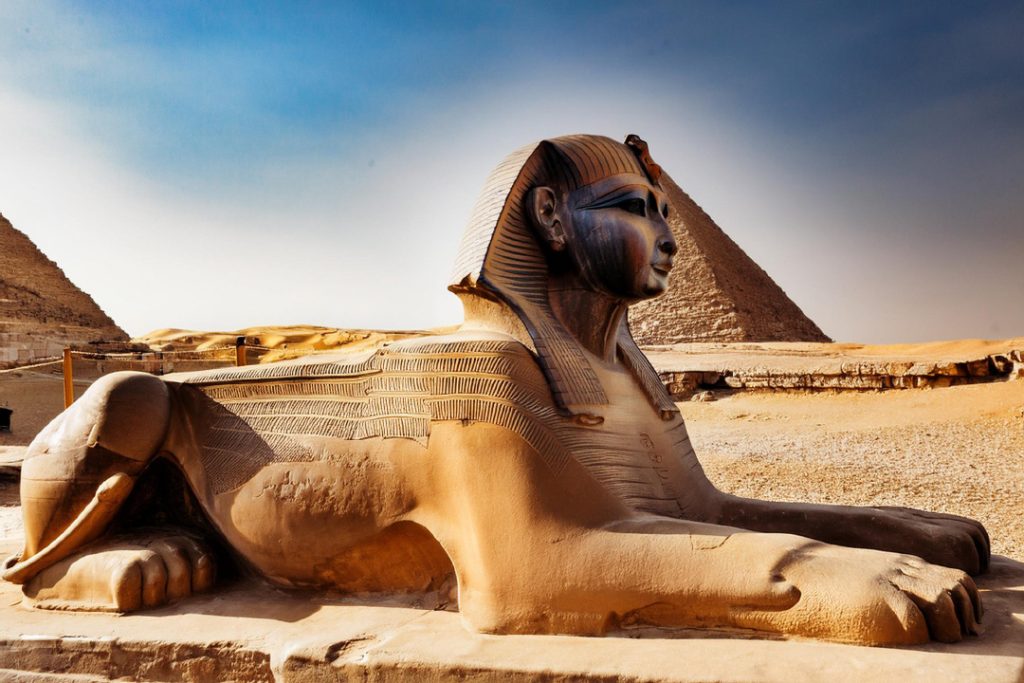Ancient Egypt: Genius Builders
Let’s talk about one of the coolest ancient civilizations: Ancient Egypt. Their architecture and engineering was next-level. Even today, their achievements blow our minds and inspire people of all ages.
A Quick Look at Egypt’s Jaw-Dropping Feats
Ancient Egypt left behind seriously impressive stuff – massive pyramids, detailed temples, and mysterious tombs that scream “hey, check out our skills!” Each creation, from the jaw-dropping Pyramids of Giza to the sprawling temples, tells us just how creative and dedicated the Egyptians were.
Why Architecture and Engineering Were a Big Deal in Ancient Egypt
For the Egyptians, building stuff wasn’t just about making pretty structures. It was about reflecting their identity and culture. They planned everything meticulously, used innovative techniques, and had some pretty sophisticated tools for their time. The way they aligned stuff with the stars and the sheer engineering genius they displayed shows they had a deep understanding of math, astronomy, and design.
By diving into what the Egyptians built, we start to really appreciate what these ancient masterminds achieved. Their contributions to architecture and engineering still fascinate scholars, historians, and curious folks today, keeping the magic of Egypt’s cultural heritage alive. Want to dive in deeper? Check out our other articles on ancient Egypt pharaohs and ancient Egypt civilization.
Pyramids of Giza
The Pyramids of Giza are mind-blowing wonders that speak volumes about the genius of ancient Egyptian architects. Nestled in the heart of Egypt, the Great Pyramid stands tall (literally and figuratively) as a symbol of human ingenuity and skill.
Building the Great Pyramid
Creating the Great Pyramid, or Pyramid of Khufu, is like the ancient world’s moon landing. It took around 20 years to build this massive structure that reaches about 481 feet high. How did they do it? Well, that’s a puzzle for the ages! Scholars and engineers still scratch their heads over the exact methods used, but it’s widely accepted that a whole community of skilled laborers, architects, and engineers made it happen. Just think of the organizational skills and teamwork that went into constructing something so precise and enormous!
Architectural Magic
The Pyramids of Giza aren’t just big; they’re clever. These massive limestone blocks, cut and stacked with amazing accuracy, make your run-of-the-mill building look like child’s play. The precision with which these stones were laid out shows the serious brainpower and painstaking effort involved.
But wait, there’s more! Inside these pyramids, you’ll find puzzles of tunnels, chambers, and corridors, all aligned with starry skies and revealing deep architectural knowledge. These internal structures prove that ancient Egyptian architects had some serious game when it came to design and construction.
| Pyramid | Height (feet) | Base Length (feet) |
|---|---|---|
| Great Pyramid of Khufu | 481 | 756 |
| Pyramid of Khafre | 448 | 707 |
| Pyramid of Menkaure | 213 | 356 |
Folks from all over the globe come to marvel at the Pyramids of Giza, and they never fail to impress. These iconic structures aren’t just stacks of rocks; they’re living stories of ancient human achievement. So next time you think about human history, tip your hat to the ancient Egyptians and their jaw-dropping legacy.
Temples and Tombs
Diving into the amazing architecture of Ancient Egypt, we spot the mind-blowing design of their temples and how important tombs were to them.
Building the Temples
Ancient Egyptian temples weren’t just thrown up in a hurry. They were almost like giant puzzles, beautifully detailed and carefully put together to worship gods and host ceremonies. Picture huge buildings covered with colorful carvings, statues that look like they might start walking, and towering obelisks reaching for the sky. You’d walk through massive gates (pylons), open courts, and halls full of columns (hypostyle halls), each part playing a unique role in ceremonies and worship.
Craftsmen, architects, and laborers worked their magic with durable materials like limestone and sandstone. They sure knew what they were doing because many of these temples are still standing today. Talk about construction that lasts!
Tombs: More Than Just Graves
In Ancient Egypt, tombs were way more than places to bury the dead. They were like personal time capsules, designed to help folks safely navigate the afterlife and keep their memory alive. Pharaohs and nobles had tombs that were as elaborate as their palaces, full of treasure and decorated to tell their life’s story.
Some tombs, like those in the Valley of the Kings or the iconic pyramids, are legendary. These aren’t just big rocks piled together—they’re powerful symbols of the ruler’s might and their claim to immortality. The inscriptions and designs inside these tombs are like history books, giving us a peek into the Egyptians’ beliefs and death rituals.
Learning about how temple complexes were built and understanding the deep importance of tombs helps us see the rich and intricate world of Ancient Egypt. Their architectural wonders still impress us today, showing just how incredible those ancient builders really were.
Advanced Tools and Techniques
Let’s dive into the fascinating world of Ancient Egypt, a place where builders worked their magic with tools and techniques that still leave us scratching our heads. This section peeks into the crafty hands and clever minds behind those mind-boggling constructions, showing off the tools and engineering tricks they used.
Tools Used in Egyptian Construction
You’d think building massive pyramids and temples required futuristic gadgets, right? Nope! Ancient Egyptians made do with some pretty basic tools — yet they were anything but simple in their skills. Here’s a closer look:
| Tool | What They Did With It |
|---|---|
| Copper Chisels | Shaped stones and carved out the finest details. |
| Wooden Mallets | Paired with chisels to get that perfect shape. |
| Saws | Copper or bronze saws sliced through stone blocks neatly. |
| Plumb Bobs | Made sure the walls were upright and monuments stood tall. |
| Rope Levels | Kept everything horizontally level. |
| Limestone Rubbing Blocks | Smoothed out stones to give them a polished look. |
These builders were real artists, turning humble tools into legends that still wow us today.
Engineering Marvels in Ancient Egypt
Ancient Egyptian builders didn’t just make stuff — they created colossal masterpieces that have aged better than your grandma’s fruitcake. Their engineering genius shines in the majestic pyramids and temples standing tall despite thousands of years.
Take the Great Pyramid of Giza, for example. It’s not just big; it’s mind-blowingly precise. We’re talking gigantic stone blocks cut and placed with an accuracy that’s hard to believe. Transport and assembly of these behemoths still baffle scholars. And the trick? Simple yet ingenious ramps, levers, and pulleys.
And then there are the temple complexes like Karnak and Luxor. These structures are all about intricate designs, massive stone pillars, and precision. Every layout and alignment shows off the ancient Egyptians’ deep understanding of architectural and engineering principles.
What’s truly amazing is the legacy they’ve left behind. Our efforts to preserve and restore these wonders speak to their lasting impact on architecture and engineering. By studying their tools and techniques, we not only appreciate their work but also feel a bit of the ancient magic that built civilizations.

Timeless Wonders of Ancient Egyptian Builders
Ancient Egyptian builders left a lasting mark on our world, especially in architecture and engineering. Their mind-blowing projects have shaped modern construction and preservation efforts in ways you might not even realize.
How Ancient Egyptian Architecture Shapes Modern Engineering
Egypt’s master builders, behind marvels like the Pyramids of Giza and splendid temples along the Nile, had some serious tech skills. Their work still influences today’s engineering, showing us that thinking big and precise pays off.
Imagine trying to build something as grand as the Pyramids without today’s tech—pretty wild, right? These ancient wizards used math, meticulous planning, and precise stone-cutting that modern engineers study and imitate to this day. Their techniques help push boundaries in structural design, proving the strength and longevity of their methods.
Preserving Ancient Egyptian Marvels
Understanding these monumental feats isn’t enough—we gotta keep them standing. Local heroes and international experts are working together to protect these pieces of history. Their mission? Stick to the old ways as much as possible, using similar materials and techniques that the Egyptians did. This way, these ancient treasures stay real and awe-inspiring for generations to come.
Every bit of careful restoration work brings ancient Egypt’s magic to life. It’s like time travel, letting folks today experience the grandiosity and technical genius of those builders. This preservation keeps the bridge between past and present solid and shows us how much we can learn from the masters of old.
Why It All Matters
The legacy of ancient Egyptian builders isn’t just about old stones; it’s about pushing the limits of what we can achieve. By looking to these ancient craftsmen, we honor the mind-blowing human potential for creativity and ingenuity. So next time you see a towering skyscraper or a brilliantly designed bridge, remember: it all started with some guys who really knew their way around a block of stone. Pretty cool, huh?
Here some recommended links selected for you: The Best Books of the Month, Todays best Deals at Amazon, Best Sellers in Cell Phones & Accessories and last but not least the easy and great way to send a gift for the holidays: Amazon.com eGift Card (Instant Email or Text Delivery).



